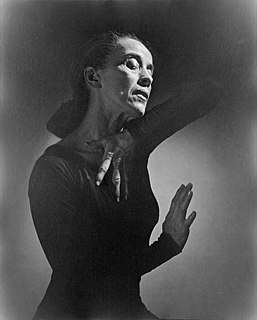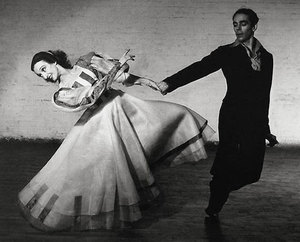
Closely related to the development of American music in the early 20th century was the emergence of a new, and distinctively American, art form -- modern dance. Among the early innovators was Isadora Duncan (1878–1927), who stressed pure, unstructured movement in lieu of the positions of classical ballet. Duncan said "from early childhood I have considered the freedom of my body essential to rhythm of movement". Her emphasis on the natural world and body in the context of concert dance influenced the ideas of the modern dancers who succeed her in America.

Contemporary dance is a genre of dance performance that developed during the mid twentieth century and has since grown to become one of the dominant genres for formally trained dancers throughout the world, with particularly strong popularity in the U.S. and Europe. Although originally informed by and borrowing from classical, modern, and jazz styles, it has since come to incorporate elements from many styles of dance. Due to its technical similarities, it is often perceived to be closely related to modern dance, ballet, and other classical concert dance styles.
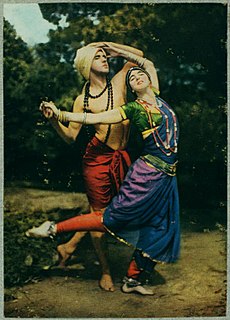
The Denishawn School of Dancing and Related Arts, founded in 1915 by Ruth St. Denis and Ted Shawn in Los Angeles, California, helped many perfect their dancing talents and became the first dance academy in the United States to produce a professional dance company. Some of the school's more notable pupils include Martha Graham, Doris Humphrey, Lillian Powell, Charles Weidman, Jack Cole, and silent film star Louise Brooks. The school was especially renowned for its influence on ballet and experimental Modern dance. In time, Denishawn teachings reached another school location as well - Studio 61 at the Carnegie Hall Studios.

Ruth St. Denis was an American modern dance pioneer, introducing eastern ideas into the art. She was the co-founder of the American Denishawn School of Dancing and Related Arts and the teacher of several notable performers.

Ted Shawn, originally Edwin Myers Shawn, was one of the first notable male pioneers of American modern dance. Along with creating Denishawn with former wife Ruth St. Denis he was also responsible for the creation of the well known all-male company Ted Shawn and His Men Dancers. With his innovative ideas of masculine movement, he was one of the most influential choreographers and dancers of his day. He was also the founder and creator of Jacob's Pillow Dance Festival in Massachusetts, and "was knighted by the King of Denmark for his efforts on behalf of the Royal Danish Ballet".
Louis Horst was a choreographer, composer, and pianist. He helped to define the principles of modern dance choreographic technique, most notably the matching of choreography to pre-existing musical structure and the use of contemporary music for dance scores.

Helen Tamiris was an American choreographer, modern dancer, and teacher.

General Hershy Bar, was the name William "Bill" Matons used as a satirical character of the Vietnam War-era Anti-War protest movement, in parody of U.S. General Lewis B. Hershey, then Director of the Selective Service. General Hershey Bar, General HersheyBar, and General Hershy Bar spelling variants can be found in the General's own publications and those of the general public when referring to him. Maton's also used The Calypso Kid and Calypso Joe during his work in Calypso music.

The American Dance Festival (ADF) under the direction of Executive Director Jodee Nimerichter hosts its main summer dance courses including Summer Dance Intensive, Pre-Professional Dance Intensive, and the Dance Professional Workshops. It also hosts a six-week summer festival of modern dance performances, currently held at Duke University and the Durham Performing Arts Center in Durham, North Carolina. Several site-specific performances have also taken place outdoors at Duke Gardens and the NC Art Museum in Raleigh, NC.
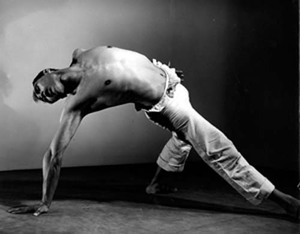
José Arcadio Limón was a dancer and choreographer who developed what is now known as 'Limón technique'. In the 1940s he founded the José Limón Dance Company, and in 1968 he created the José Limón Foundation to carry on his work.

Martha Hill was one of the most influential American dance instructors in history. She was the first Director of Dance at the Juilliard School, and held that position for almost 35 years.
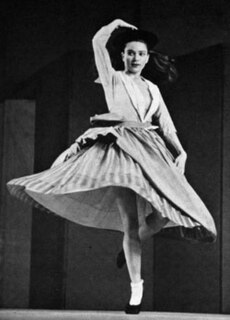
Eleanor Campbell King (1906–1991) was an American modern dancer, choreographer, and educator. She was a member of the original Humphrey-Weidman company, where she was a principal dancer in the pioneering modern dance movement in New York City, then moving on to choreography and founding her own dance company in Seattle, Washington. She was a professor emerita at the University of Arkansas, where she taught from 1952 to 1971, before retiring to Santa Fe, New Mexico to start a new course of study into classical Japanese and Korean dance. She choreographed over 120 dance works, and wrote extensively for a variety of dance publications. In 1948, she was named Woman of the Year in Seattle, and in 1986 was listed as a "Santa Fe Living Treasure", also receiving the New Mexico Governor's Artist Award. In 2000, her archive was recognized by the White House Millennium Council's "Save America's Treasures" program.

The Perry-Mansfield Performing Arts School & Camp is a dance, theater and equestrian camp located in Steamboat Springs, Colorado. Founded in 1913 by Charlotte Perry and Portia Mansfield, it is the oldest continuously operating dance and theater school in America. In 1995, the site was included on the National Register of Historic Places in 1993, and Mansfield and Perry were inducted into the Colorado Women's Hall of Fame in 2004.
Modern dance is an evolution of choreography and performance that came after ballet. It can be divided into multiple types.
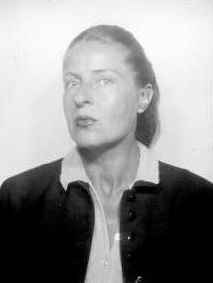
Katherine Litz was an American dancer, teacher, and choreographer. She was a Guggenheim Fellow in 1965.
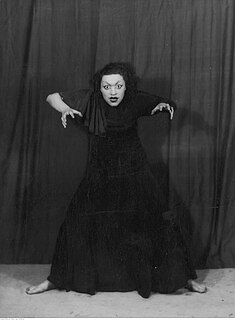
Pola Nirenska, born Pola Nirensztajn, was a Polish-born Jewish performer of modern dance. She had a critically acclaimed if brief career in Austria, Germany, Italy, and Poland in the 1930s before fleeing the continent in 1935 due to rising antisemitism. She spent 14 years in the United Kingdom, primarily entertaining refugees, troops, and war workers. She emigrated to the United States in 1949 and settled in Washington, D.C., where she was widely acknowledged as the city's leading choreographer and performer of modern dance until her death.
Miriam Pandor was a German dancer, choreographer, teacher and writer. She is well-known for her works which address racism, antisemitism and social injustice.
